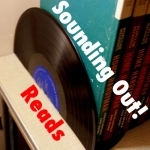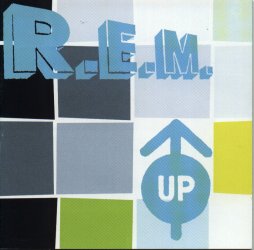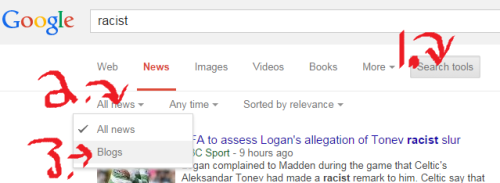I woke up sweating in Tampa; I flew home to the Midwest; I went to bed shivering.
Using a few of my tweets as a guide, I want to share some of the things I sweated about while attending CCCC 2015; what made me fly; what made me shiver.
(I won’t try to be comprehensive–how could I?)
***
I’m thinking about the velocity of scholarly conversations, and all the agents that affect how and when our conversations get to our audiences.
Example: at CCCC 2014 I co-led a workshop on intellectual property in the classroom. The takeaway was a link to a Google Doc that we would keep up to date with resources for teachers wondering about copyright and fair use, especially when they’re teaching multimodal composition. We made a draft of the doc. We kept saying we would fix it up, make it better. And if I’m remembering correctly, we never really did get it to the level that we wanted. It sat on Google Drive, shareable but unshared. A lonely kitten named Potential.
But at the IP Caucus this year, someone mentioned that they wanted resources for teaching this stuff. Suddenly, that old draft of a document seemed pretty good–what was so lacking about it a year ago, I wondered?–so I shared it with my action table, tweeted a link to it. Suddenly, it seemed more ready than it did before.
What slowed me down? Not the technology; not the pace of scholarly publishing houses and journals–just me.
So in other contexts, how else do our ideas speed up, slow down, get stuck in alleys?–even alleys with fences so low that we could jump them easily, come on, just put your foot there, just hop a little bit, you’re even wearing the right shoes.
***
1. I’m thinking about how nice it is to be told things clearly and directly sometimes instead of having to figure them out. (Spoiler: this contradicts what I say later on in this very same post, so look out, please.)
2. I’m thinking about how different we are in this field, how many sub-groups there are.
A colleague, after returning from CCCC: “This is the first time I’ve really felt that I was missing out of something by not being on Twitter.” My thought: that’s how I felt in like 2010.
But that’s a reminder of my silo: at CCCC, I find myself in rooms with Computers and Writing people, especially sound-loving C&W people, over and over. Oh, hi, Jody/Jen/Wendi/Steven/Steven–what a surprise that we’re in the same room. It’s not a surprise, they say, and here are other fences you could step over Kyle, into all the other sub-parts of our field, if you would just reach out and learn more and more and more–they’re all here–so step into my interlaced fingers if you’re not afraid or busy, is that it are you afraid or busy?
*shivers*
***
I’m thinking about speed again.
Adam Banks’s chair’s address was the best that’s ever been. Just watch it, and be sure to shout at the right time, clap along, right there, I can see you, you don’t think I can but I can. I can fly.
And Banks can fly, too. That’s how Joyce Locke Carter introduced him: as personifying a mixture of Kirk, Spock, and McCoy, flying up there in their Enterprise. So, fingers flying, I opened Photoshop (“I can do that!“) and made it happen. My most retweeted tweet ever.
But here’s what I was thinking, sweating there in my chair: “I didn’t remove the background from his head. I didn’t line the words up well enough. I could have made this more professional. Maybe I should wait a year until I get it perfect, and send it out then?”
***
My dissertation was probably influenced more than anything else by Steven B. Katz’s The Epistemic Music of Rhetoric: Toward the Temporal Dimension of Affect in Reader Response and Writing. Here’s a quote to make you shiver:
Perhaps time, and all it stands for, is the basis of the experience of language as sound, emotion a lump of time caught in the throat. Perhaps it is through time that we can know the affective experience of language as an indeterminate flux and flow. Perhaps it is in time that the essential unity, the oneness that oral cultures experienced in sound, exists. Perhaps we have not lost it. Perhaps it is still in the music of language.
So when I walked into A.31, there he was, Steve Katz himself, playing guitar and wearing a hat. I don’t have words.
And then: there was punkrock and crunchy beats and I swear this is true an entire presentation presented through rap:
Did I understand it all? I couldn’t. But did I make meanings that were both scholarly and non-scholarly (whatever that means)? I couldn’t help it.
***
This point, from early in Hammer’s D.23 presentation, is still ringing in my ears: what comes after? And after? And after?
Not just remix–what comes after knowing-what-I-know-and-telling-what-I-know-as-if-telling-was-the-same-as-teaching? (Don’t make me say post-pedagogy.)
What comes after waking up in the Florida heat, sweating? Isn’t it always flight? Isn’t it always shivers?
***
Now is when I will take one sentence to tell you (not teach you) that there are times when pre-panel marketing on Twitter is my favorite and times when it bugs me yet I can’t seem to tell when is which, but whatever here I am using sound to draw people to my very own panel (F.19), as if I were playing a flute to lure you into the room, yes you, or rattling a chain-link fence to get your attention. So there.
Here was my experience drafting my part of our 4-part, sound-filled presentation: I couldn’t make myself fall into the telling mode, the this-is-what-I-know thing. So, as a draft, as an invention device, I started writing in the voice of the twentieth century composers I was using to personify the main conflict I was exploring.
(Short version: Milton Babbitt stood in for folks who compose for specialized audiences, the few in his academic world who will understand his academic/musical moves; Elliott Carter stood in for folks who compose for a more general audience, those who keep in mind how difficult it is for non-specialists to understand complex musical moves.)
So instead of saying, “Milton Babbitt claims…” I just said, “I’m Milton Babbitt. I want you to realize that….” And I wasn’t at first going to stick with that first-person style the whole time, for the whole presentation, you have to believe me on this, but then I couldn’t get away from it, those voices were so compelling.
And when it was time to clarify, to sum up, to say to the audience, “You might not have understood everything I just threw at you, so let me make some sense out of it,” I realized 1) that I had dropped in so so many clues that they ought to have known already by then, and 2) that who was I to say what my own presentation meant?
***
Katz writes a lot about Cicero:
The central thesis of this book is that affect in reading and writing could perhaps be better (though not completely) described and understood by a phonocentric rather than a logocentric theory of response–one based on aural, temporal modes of experiencing and reasoning that we perhaps find in the theory of the ancient sophists and Cicero rather than the visual, spatial ones that currently dominate our scientific culture.
***
Copyright, IP policies, fair use–they seem so static, so certain, so arhetorical. (I mean, I don’t think so, and neither does G.44. But I hear you. I know they seem that way.)
But consider the way fair use really works: it’s fundamentally, purposefully fuzzy as a concept. Until a judge says so, no one can 100% say whether a use is fair or not. Not even you, or you. Or I.
***
In J.18, they made stuff: a dataset and its interpretation, and a visual/aural conversation with a murderer (that’s right), and a dataset and its interpretation, and a calming-yet-wild screencast which is another way of saying that it was Dan Anderson.
And why did all this making feel so, so good? I think it goes back, partly to the telling vs. showing thing. Yes, they told, but they showed. And I made meanings, and even experienced a lot of the good stuff on my own there in my own browser, what, did you think I’m always typing notes or tweeting or something no I’m also looking things up, even you, I looked up you, nice profile pic.
But eventually, I stopped typing and shut up for a bit:
***
I know you’re looking for another cue about the theme of this post so HERE IT IS, right in L.27 (where else?). Also here:
Yes, pleasure is the right word, the pleasure that makes you fly, that makes you shiver. And again, it came through making, not telling. Or, well, some of both. A brownie mix of making and telling. Which brings pleasure, ding! will you get that out of the oven for me?
You’ve guessed it by now, that I don’t follow for too long when there’s theorizing without making, and you don’t agree and that’s fine, it’s fine, and it’s my fault for not reading widely enough or understanding things I should understand, I really get that, but guys. Theory can be part of the making. The big words can help us move toward funk, and flight, and freedom. But we have to go there: we have to take the flight, make the things, work the big ideas into the creations, the art.
Jeff Rice (remember? I’m talking about L.27? Still? Still.) wove Jameson’s cognitive mapping into his narratives of fatherhood, travel, and scholarly authenticity. Jameson was a node in a network of ideas. It wasn’t, “AND NOW JAMESON JAMESON I WILL EXPLAIN TO YOU INSTEAD OF GIVING YOU TIME TO READ IT YOURSELF HERE’S MORE BIG NAMES I’VE GOT DOZENS, HA HA!” (And some presentations were like that. Not in L.27, though. Which we’re still discussing.) Instead, Jameson achieved an equality with beer flights, with pictures of children, with Stuart Hall’s coding/decoding, with William Least Heat Moon and Wendell Berry. It all spoke to each other.
As if you’ll believe me just because I told you so.
***
Two Ways to Confuse Your Audience, A Guide, by Kyle D. Stedman, PhD:
- Use big-theory words over and over without tying them to anything that we can see or touch.
- Carefully compose a pastiche of sources, meanings, and ideas, leaving it somewhat up to the audience to put the pieces together, resulting in a lot of meanings that are all in the same key, even if no one self-composed exactly the same mental song.
- Corollary to 2: This may result in not so much confusion as pleasure.
***
My 2nd-most-popular tweet from the conference, I think. But I’m not sure it means what I think it might look like it means. (Which is ok. Which is part of my big point. You know that, right?) I’m not even sure what it means myself.
But as with all the best things, I figured out what it sort-of-means-to-me through conversation. On Saturday night, as people were rewteeting, I got into a delightful conversation with a few folks. Look: I can prove it:
(This is the conversation I was in before, during, and after I stopped at Bo’s for a peanut butter shake. Like, picture me sucking on a shake in a dark car, typing on my phone, in the midst of this conversation, trying to get it all in before I get in the car and respond at a stoplight, only at stoplights, I’m not one of those people. And a Bo’s peanut butter shake is both theory and art, let me tell you.)
You know how sometimes a tweet seems to be coyly making a statement through its rhetorical wondering? But sometimes it’s actually someone wondering, unable to land on an answer. In this 2nd-most-popular tweet, this was actually me wondering all the things that it says I’m wondering, not telling-by-pretending-to-wonder. That is: What kinds of changes do I want? When does the artfulness of making instead of explaining affect audiences in such a way that they are moved–emotionally, in time, in real, actual ways–to enact change in the world? And when is that not enough–when do our theories and terminologies and our tellings help cut through the confusedness and polyvocality of art, leading to even more and better action?
And here, dear reader, is me continuing to wo/ander. Hold my hand.
See you next year?


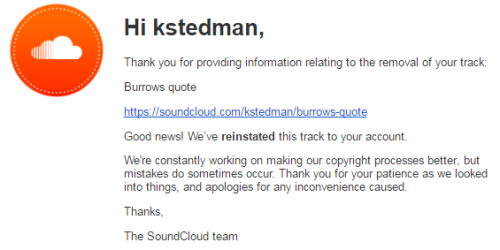
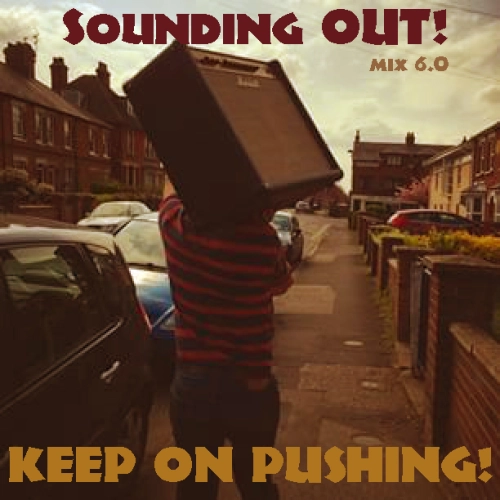 Click
Click  All of us have reeled at one time or another at what sometimes seemed like a Niagara Falls of quicksand: mounting challenges, unexpected setbacks, pay and budget cuts (if you had a budget to begin with), hashtag memorials, calculated attacks, haters far more malevolent than your basic Taylor Swift variety, general piling on…
All of us have reeled at one time or another at what sometimes seemed like a Niagara Falls of quicksand: mounting challenges, unexpected setbacks, pay and budget cuts (if you had a budget to begin with), hashtag memorials, calculated attacks, haters far more malevolent than your basic Taylor Swift variety, general piling on…